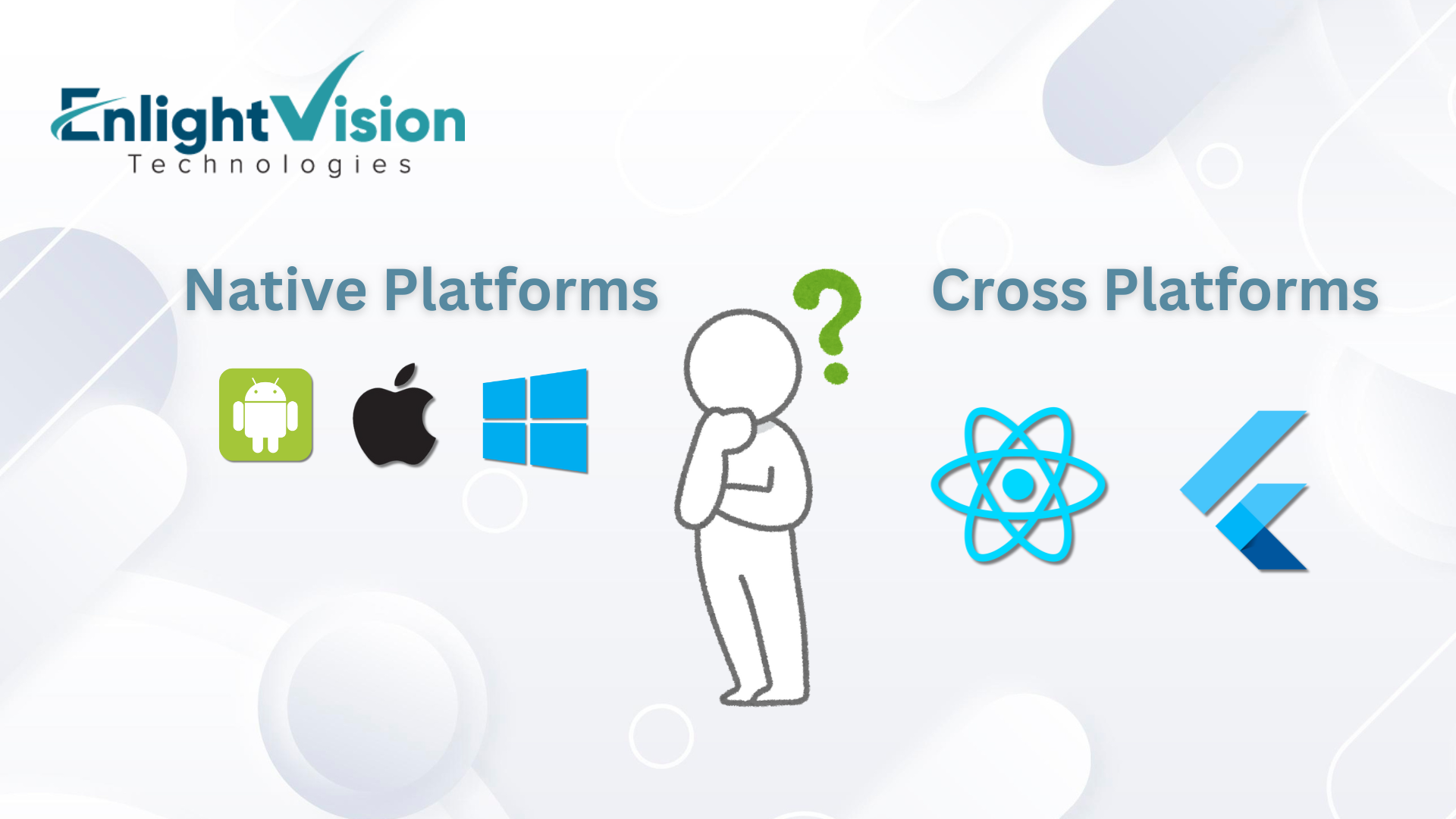Mobile Development in 2025 – Native vs. Cross-Platform: Which One is Right for You?
Introduction:
The Future of Mobile App Development
The field of developing mobile apps is changing quickly due to new frameworks, trends, and technology. Businesses must choose between native and cross-platform development as 2025 approaches; this decision has a big impact on scalability, cost, performance, and user experience.
But which development methodology produces the greatest outcomes with advancements like 5G, AI-powered apps, AR/VR, and cloud integration? To assist you in making an informed choice, let’s examine the advantages, disadvantages, current trends, and anticipated future developments.
What is Native Mobile Development?
Building platform-specific apps for iOS and Android with their official programming languages and tools is known as native development.
📌 Popular Native Technologies in 2025:
- iOS Apps: Swift, Objective-C (Xcode IDE)
- Android Apps: Kotlin, Java (Android Studio)
✅ Advantages of Native Development:
✔ Superior Performance: Direct access to device hardware, ensuring faster execution.
✔ Seamless User Experience (UX): UI aligns perfectly with platform guidelines.
✔ Better Security: Built-in platform security measures, reducing risks.
✔ Full Hardware & API Access: Enables AR, VR, IoT, and AI features.
✔ Long-Term Stability: Regular updates and compatibility with new OS versions.
❌ Disadvantages of Native Development:
❌ Higher Development Cost: Requires separate teams for iOS and Android.
❌ Longer Time-to-Market: Writing two different codebases increases development time.
What is Cross-Platform Mobile Development?
A single codebase can run on several platforms (iOS, Android, and web) thanks to cross-platform development. Frameworks like Flutter, React Native, Xamarin, and Kotlin Multi Platform are helping to make this strategy more and more mainstream.
📌 Popular Cross-Platform Technologies in 2025:
- Flutter (Dart) – Backed by Google, ideal for fast UI development.
- React Native (JavaScript) – Facebook’s framework for dynamic apps.
- Xamarin (.NET & C#) – Microsoft-powered, robust for enterprise apps.
✅ Advantages of Cross-Platform Development:
✔ Quicker Development: A single codebase saves 40% to 50% of the time needed for development.
Cost-effective: iOS and Android don’t require different teams.
✔ Simpler Maintenance: Updates can be released on both platforms at the same time.
✔ Greater Audience Reach: Market penetration is increased by launching on several platforms.
❌ Disadvantages of Cross-Platform Development:
❌ Slightly Lower Performance: Not fully optimized for each platform.
❌ Limited Access to Native APIs: Some platform-specific functionalities may require additional coding.
❌ UI/UX Challenges: Some frameworks may not perfectly replicate native experiences.
In-Depth Comparison: Native vs. Cross-Platform in 2025
| Feature | Native Development | Cross-Platform Development |
|---|---|---|
| Performance | 🔥 Best (optimized for each OS) | ⚡ Good, but may lag in high-performance apps |
| Development Time | ⏳ Longer (separate codebases) | 🚀 Faster (single codebase) |
| Cost | 💰 Higher (two separate apps) | 💲 Lower (one app for all platforms) |
| User Experience | 🎨 Excellent (native UI) | 🎭 Good, but may have minor inconsistencies |
| Security | 🔒 Strongest | 🔐 Good, but requires extra layers |
| Maintenance | 🔄 Complex (two codebases) | ✅ Easier (one codebase) |
Key Mobile Development Trends in 2025
📌 1. AI & Machine Learning in Apps
- AI-driven chatbots, recommendation systems, and predictive analytics are transforming mobile apps.
- Example: Personalized AI-powered fitness and healthcare apps.
📌 2. 5G-Powered Mobile Apps
- With 5G speeds, apps can now process real-time video streaming, AR/VR experiences, and IoT interactions seamlessly.
- Example: 5G-powered gaming and telemedicine apps.
📌 3. Progressive Web Apps (PWAs) Taking Over
- PWAs combine web and mobile experiences, reducing development costs.
- Example: Twitter, Uber, and Starbucks use PWAs for better performance.
📌 4. IoT-Integrated Mobile Apps
- IoT-enabled apps in smart homes, healthcare, and logistics are on the rise.
- Example: Apps that control smart thermostats, wearable health devices, and smart appliances.
📌 5. Augmented Reality (AR) & Virtual Reality (VR) Boom
- AR/VR integration is becoming mainstream in education, gaming, and retail apps.
- Example: Virtual try-on apps in the fashion and furniture industry.
When to Choose Native vs. Cross-Platform?
✔ Go for Native Development if:
🔹 You need high-performance, graphics-intensive, or security-focused apps (e.g., banking, gaming, AR/VR).
🔹 You want long-term scalability and premium UX for iOS/Android.
✔ Go for Cross-Platform Development if:
🔹 You need a cost-effective, fast, and scalable solution for startups & SMEs.
🔹 Your app is content-based and doesn’t require heavy OS-specific features.
Case Study: Cross-Platform Success Story
📌 Company: Airbnb
📌 Issue: Keeping distinct codebases for Android and iOS raised expenses and complexity.
📌 Solution: By switching to React Native, 40% less work was required for development.
📌 Result: Faster updates, a more seamless user experience, and financial savings are the outcomes.
Final Verdict: Which One is the Best for 2025?
Depending on the requirements of your project, there is no one-size-fits-all solution:
✔ If you want a high-end, performance-focused, security-first app, go with Native.
✔ Select Cross-Platform if you’re looking for a scalable, quick, and affordable solution.
We at EnlightVision Technologies are experts in both cross-platform and native development. Our group guarantees flawless UI/UX, excellent speed, and scalable future-proofing.
💡 Do you need assistance making a decision? Let’s talk about your app concept! For a free consultation, contact us right now.








